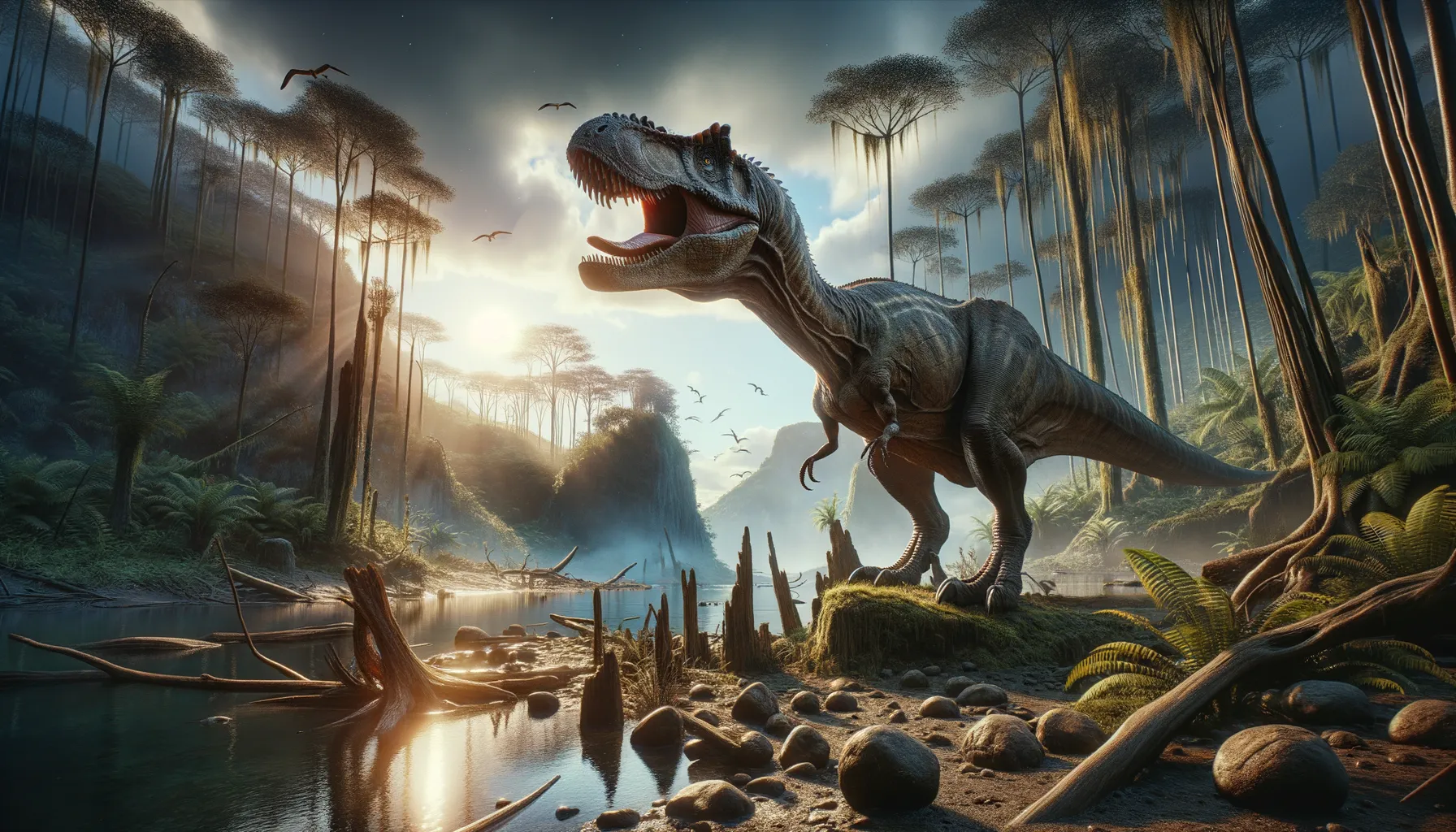
Umarsaurus
Explore the strength of ancient giants.
Period
Cretaceous
Length
Approximately 9 meters long.
Height
Around 3 meters tall.
Weight
Approximately 1.5 to 2 tons.
Umarsaurus was a formidable dinosaur that roamed the Cretaceous landscapes. Known for its moderate size and notable strength, it was a versatile predator and scavenger. Its fossils indicate a well-adapted creature, both socially interactive and physically robust. The discovery of Umarsaurus has helped paleontologists understand more about ecosystem dynamics and species interactions during its era.
Diet
Umarsaurus primarily fed on smaller dinosaurs and carrion. Its omnivorous diet allowed it to adapt to different food sources, helping it survive in varying environmental conditions.
Hunting
This dinosaur relied on ambush tactics due to its moderate speed. It often used the element of surprise to catch its prey, preferring to hunt during low-light conditions.
Environmental challenges
Umarsaurus faced significant climate fluctuations during the Cretaceous, requiring adaptability to sudden weather changes. Predator competition was fierce, with larger carnivores posing constant threats. It also needed to navigate through diverse terrains, from forested areas to open plains, to find food and shelter.
Speed
Moderate, capable of steady but not rapid movement.
Lifespan
Estimated to be around 20 to 30 years.
First discovery
Unearthed during a 1978 expedition in central Asia.
Fun Facts
- Umarsaurus was a herbivorous dinosaur, which means it only ate plants.
- It lived during the late Jurassic period, around 150 million years ago.
- Umarsaurus was known for its distinctive long neck, which helped it reach tall trees.
- This dinosaur's fossils have mainly been found in what is now North America.
- Umarsaurus is believed to have been a social creature, often traveling in groups for protection.
- Despite its massive size, Umarsaurus had a relatively small brain.
- Scientists named it 'Umarsaurus' after its discoverer, Dr. Umar Singh, who found the first fossils.
Growth and Development
As a young Umarsaurus, growth was rapid in the first few years, reaching near adult size quickly to avoid predation. Juveniles stayed close to adults for protection and learning essential survival skills. Full maturity was reached within a decade, marking their entry into the breeding population.
Habitat
Umarsaurus thrived in mixed environments, favoring areas near water sources like rivers and lakes. These sites provided ample food and drinking water, key to its survival. Dense forests offered cover and hunting grounds, while open spaces were necessary for group movements and social interactions.
Interaction with other species
Umarsaurus coexisted with various herbivorous and carnivorous species, often competing for resources. Its presence influenced the behavior of smaller dinosaurs, who remained vigilant. Symbiotic relationships with scavengers sometimes developed, allowing efficient resource use after successful hunts.
Natural lifespan
Umarsaurus could live naturally for up to three decades.
Reproduction
Breeding typically occurred in cooler seasons, with nesting sites chosen carefully for protection. Females laid clutches of eggs, which were guarded fiercely by both parents. Hatchlings were precocial, requiring little care after birth, relying heavily on instinct.
Social behaviour
Umarsaurus displayed social tendencies, often moving in small, coordinated groups. Communication was key, with vocalizations used to signal danger or coordinate moves. This social structure provided safety in numbers and improved hunting success rates.
Fossil locations
Fossils have predominantly been found in central Asia, with several significant discoveries in Mongolia. Other notable sites include areas in northern China, known for rich Cretaceous fossil beds. These regions have provided valuable insight into the biodiversity and geological conditions of the time.
